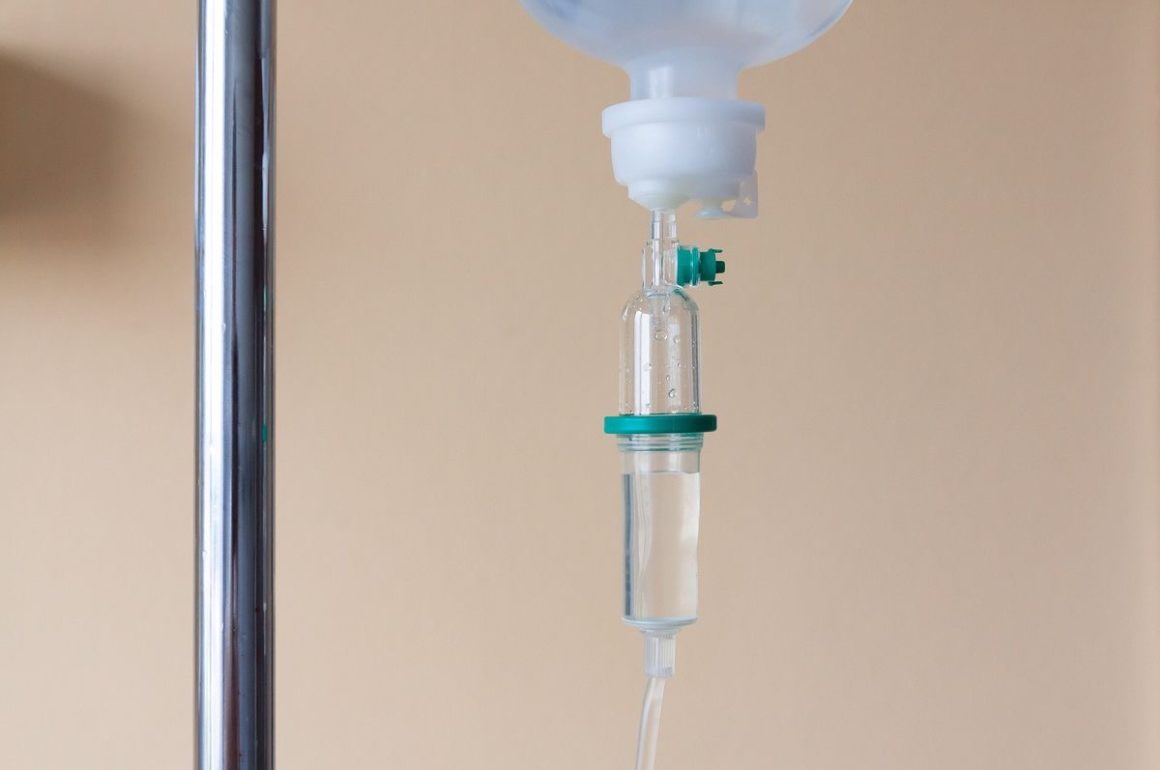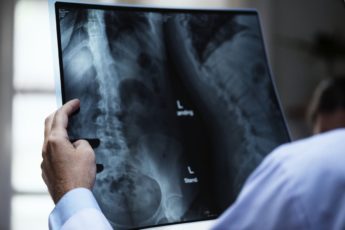
READING TIME: 3 MIN
First of two parts.
Looking back, so many of the big events in Gabriella’s infancy involved visits to the geneticist’s office, from the diagnosis to the Level II ultrasound, and our first trip was no exception.
The geneticist had been there at the beginning, sitting in the chair across from us in the hospital, explaining that Gabriella would need an MRI of the spine, a kidney ultrasound and a skeletal survey, and enough X-rays that the head of Radiology finally declared, “No more radiation for that child.”
So we moved on to bloodwork. The geneticist said a chromosome analysis would help rule out certain syndromes and genetic conditions.
We packed our daughter into the car-seat and drove to the genetics center. Gabriella sobbed when we arrived, as if she knew they would have to stick her multiple times. She was so tiny, it was rare that anyone could find a vein the first time with a needle, and they fared pretty well, needing only two tries and leaving only one bruise. It’s a terrible thing to hear your child shriek with pain and to be unable to do anything to ease her suffering.
When at last they brought her back to us, Gabriella was still, even lethargic, worn out by the ordeal. “While we’re here,” Lisa said. “Would you mind weighing her?”
The genetic counselor led us through the hospital halls to the weighing room. We lifted her onto the scale: four pounds, nine ounces.
“But she was six-two when she was born,” I said.
“It’s natural for a baby to lose a little the first few days,” the genetic counselor said.
I looked at Lisa, numb with dread. “She was down to five-seven by the time we left the hospital,” she said. “But this is almost another pound.”
And that had been a week earlier. She should have been gaining weight back by now.
The genetic counselor could say only that different scales gave different readings. We thanked the genetic counselor for her help, and hurried to our pediatrician to weigh her on the same scale as our last time. On the way, we questioned whether that one final blood-letting had been enough to topple her over the edge.
We also wondered what we had done – or not done – that had pushed her to the edge in the first place.
It was at the pediatrician’s office that I learned another horrid word: tenting. Gabriella’s abdominal skin was so slack that when the doctor lifted it, it formed a peak, then settled. Tenting is a sign of advanced dehydration.
She weighed four-twelve on this scale, a full pound less than during her recent check-up. And she was suddenly lifeless, as if drained of her blood.
The drive to the hospital was again a blur. (In those days, we rushed from one medical facility to the next, and my mind fought to keep up.) As we did so many times, Lisa took her inside and I parked, then headed to Admitting.
I remember that the only candidate waiting before me was a small African American girl. She looked as scared as you’d expect a tiny person to look in a big room. I received immediate attention, while she waited (for a parent or guardian, I assumed). Then a white woman bustled in, shouting about the neglect of foster children. I sat red-faced, lamenting babies born as sick as ours into poor families, without medical insurance. It was not the last time I felt shame over our healthcare system.
Then I returned to Gabriella. I prayed that we wouldn’t lose her, but I also wondered if God wanted her back.
When I got upstairs to Gabriella’s room, I saw tears of fright and frustration around Lisa’s eyes. I was so attached to our small, damaged girl. I rejoiced in our moments of intimacy: standing with her on my shoulder and rocking from side to side and whistling to soothe her on her second day of life. The adoration in those tiny eyes brought a rush of parenthood more addictive than anything I had ever known. Even though questioning God’s intentions summoned a tinge of Catholic guilt, I decided I wasn’t ready to give her back.








Leave a Comment